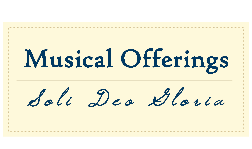Publication Date
4-11-2016
Document Type
Article
Keywords
Keyboard, Baroque, clavichord, harpsichord, pianoforte, spinet
Abstract
The purpose of this paper is to analyze the impact that Baroque society had in the development of the early keyboard. While the main timeframe is Baroque, a few references are made to the late Medieval Period in determining the reason for the keyboard to more prominently emerge in the musical scene. As Baroque society develops and new genres are formed, different keyboard instruments serve vital roles unique to their construction. These new roles also affect the way music was written for the keyboard as well. Advantages and disadvantages of each instrument are discussed, providing an analysis of what would have been either accepted or rejected by Baroque culture. While music is the main focus, other fine arts are mentioned, including architecture, poetry, politics, and others. My research includes primary and secondary resources retrieved from databases provided by Cedarville University. By demonstrating the relationship between Baroque society and early keyboard development, roles and music, this will be a helpful source in furthering the pianist's understanding of the instrument he or she plays. It also serves pedagogical purposes in its analysis of context in helping a student interpret a piece written during this time period with these early keyboard instruments.
Volume
7
Issue
1
Article Number
4
DOI
10.15385/jmo.2016.7.1.4
Recommended Citation
Stevenson, Rachel
(2016)
"The Interwoven Evolution of the Early Keyboard and Baroque Culture,"
Musical Offerings: Vol. 7:
No.
1, Article 4.
DOI: 10.15385/jmo.2016.7.1.4
Available at:
https://digitalcommons.cedarville.edu/musicalofferings/vol7/iss1/4
Creative Commons License

This work is licensed under a Creative Commons Attribution-Noncommercial-No Derivative Works 4.0 License.
Disclaimer
The CedarCommons repository provides a publication platform for fully open access journals, which means that all articles are available on the Internet to all users immediately upon publication. However, the opinions and sentiments expressed by the authors of articles published in our journals do not necessarily indicate the endorsement or reflect the views of Digital Services, the Centennial Library, or Cedarville University and its employees. The authors are solely responsible for the content of their work. Please address questions to the Digital Services staff.
Copyright
© 2016 Rachel Stevenson. All rights reserved.
Included in
Ethnomusicology Commons, Fine Arts Commons, Musicology Commons, Music Performance Commons, Music Theory Commons

